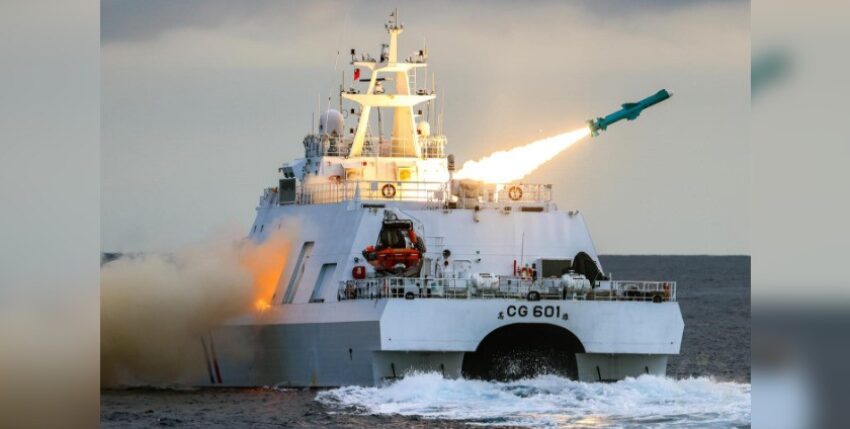Only a 180-kilometre-wide strait separates Taiwan from the People's Republic of China. The democratic country feels increasingly threatened and is modernising its naval forces.
American intelligence services assume that Beijing could attempt to annex Taiwan by force before the end of the current decade. The comparison of David against Goliath comes to mind. In contrast to the biblical story, however, the giant is not only strong but also increasingly manoeuvrable. In view of the ongoing modernisation of the People's Liberation Navy, Taiwan's naval forces are looking for ways to increase their own striking power despite limited resources.
The current orientation of the force structure and operational doctrine is largely based on the US armed forces. Accordingly, the Chinese armed forces were to be fought at a greater distance within the entire Taiwan Strait and repelled through attrition. However, this is no longer optimal for Taiwan's current situation. The threat situation, which is characterised by Chinese armament and modernisation, requires agile, survivable operational systems and operational concepts that are designed for asymmetric combat at short range.
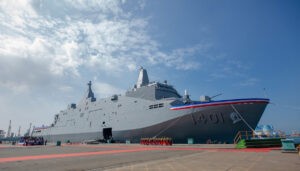
The new strategy is divided into two defence phases. The first war phase is primarily the domain of the navy, supported by long-range land-based sensors and missile systems. This littoral phase includes operations up to 100 kilometres from the main island of Taiwan. The Penghu archipelago (also known as Pescadores), which is part of Taiwan and consists of around 90 islands, is also located within this operational zone. The aim is to intercept and destroy enemy forces as far in advance of the Taiwanese territory as possible. Key elements of this phase are the deployment of larger Taiwanese warships equipped with sea-target missiles and the laying of sea mines. Mining long stretches of the Taiwan Strait, which is only 180 kilometres wide, would considerably limit Beijing's options. Chinese forces would either have to conduct time-consuming mine reconnaissance and clearance (and expose the forces involved to targeted decimation) or limit the amphibious assault waves to a few lanes that are still open, which would allow Taiwan to concentrate its defence forces.
Realistically, the first phase of the ODC strategy should only delay the advance of a numerically far superior opponent. The second defence phase will be initiated as soon as Chinese landing forces approach Taiwan at a distance of around 40 kilometres. The sea mines then become even more important. They are to be laid in large numbers off the suspected landing beaches. The Chinese landing forces there will then be decimated by a large number of fast missile boats and land-based mobile anti-ship missiles and artillery. Ideally, the remaining landing forces will be sufficiently weakened so that Taiwanese army troops can stall or defeat them.
Taiwan's armed forces are currently being equipped with new weapon systems in order to fulfil the ODC doctrine. Taiwan's navy is referred to internationally by the English-language abbreviation ROCN (Republic of China Navy), while the warships are labelled ROCS (Republic of China Ship). Its tasks are necessarily limited to the surrounding waters, including the Taiwan Strait. They include the protection of the main island as well as the smaller islands under Taipei's jurisdiction and the surrounding maritime trade routes, which are the lifeline of Taiwan.
The ROCN has a personnel strength of around 40,000 posts. There are four major naval bases spread across the north and south of the main island of Taiwan and on the island chain of Penghu. There are also six smaller bases for speedboats and patrol boats.
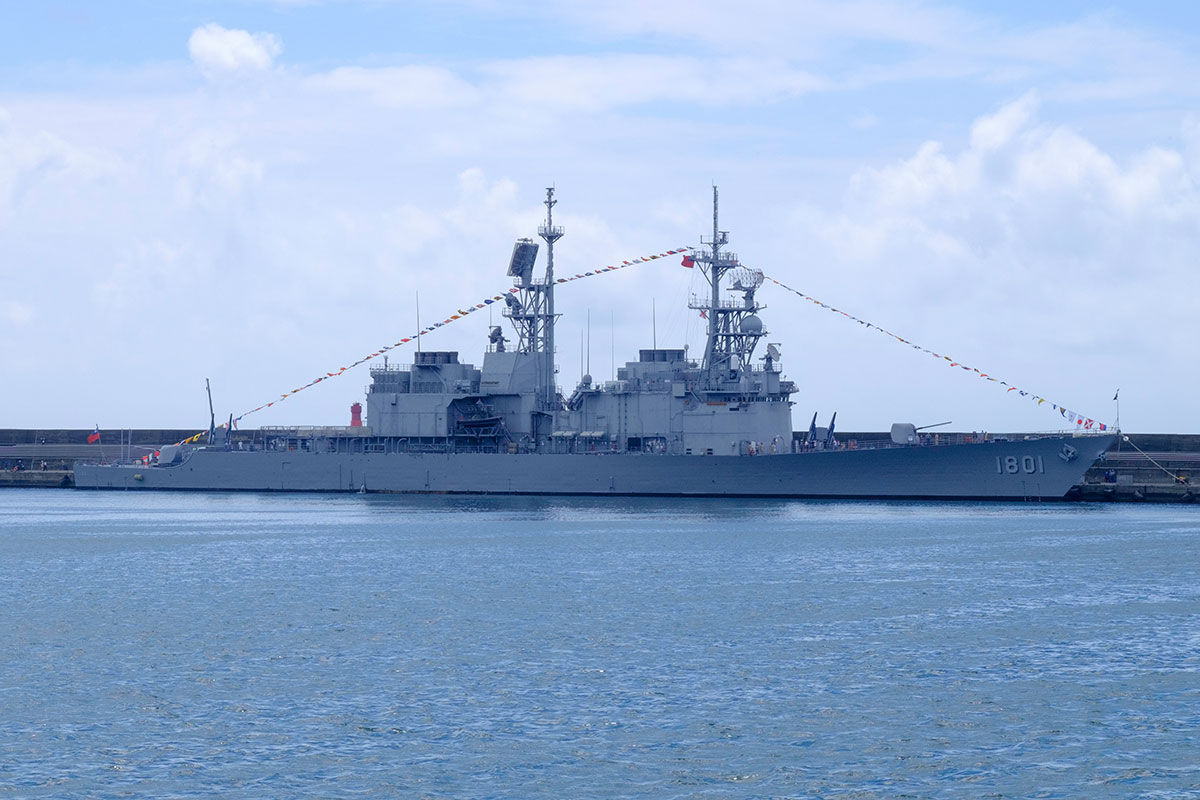
In line with its territorial defence mission, the ROCN consists primarily of smaller warships. The naval command currently has around 100 floating units. For a long time, Taiwan relied on imports from the USA and, to a lesser extent, from Europe, but in the last two decades the focus has shifted to the development and production of indigenous operational systems. The leading institutions for development and production are the state-owned company NCSIST (National Chung-Shan Institute of Science and Technology) and the private shipbuilding company CSBC (Taiwan International Shipbuilding Corporation). In 2016, the Ministry of Defence announced a 22-year fleet construction programme (2018 to 2040). It comprises twelve different development and procurement projects to be carried out domestically wherever possible. The priorities are the fast mine warfare ships and the Tuo Jiang-class fast missile boats, which are particularly important for the ODC concept.
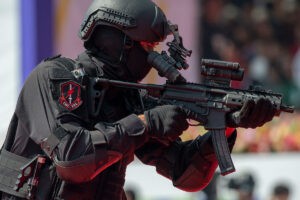
Own weapons development
Domestically developed anti-ship missiles and other precision weapons enable both larger combat vessels and speedboats to directly attack Chinese forces within Taiwan's coastal waters. They are comparatively affordable - especially in comparison to imported on-board weapons - and can be procured in large numbers.
The Hsiung Feng 2 and 3 (HF 2/ HF 3) sea-launched missiles developed domestically by NCSIST can be deployed by ship or lorry and play a key role in the ODC concept. Almost all warships and speedboats of the ROCN use the HF 2 and HF 3 as primary naval target weapons.
The HF 2 variant was introduced in 1990 and replaced by the Block II version in 2007. The missile flies above the waves (sea skimmer) at Mach 0.8 in the subsonic range and is difficult to locate by the enemy. The homing system uses both radar and infrared sensors. The range has been extended to around 250 kilometres.
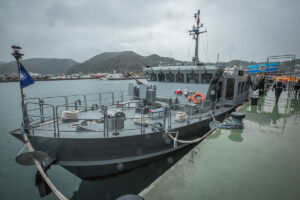
The HF 3 variant flies supersonically using a ramjet engine and is equipped with a performance-enhanced electronic warfare system to overcome enemy defence systems. Independent experts estimate its range at 400 kilometres. The 500-pound warhead is designed to detonate inside the ship, directing the main explosive force downwards to sink the target. The HF 3 is regarded as the ROCN's most advanced naval target weapon and is primarily intended for use against high-value targets such as aircraft carriers, destroyers and amphibious warships.
The Tien Chien 2 air defence system, a further development of a Taiwanese air-to-air missile designed for maritime purposes, is also used on most of the ROCN's ship and boat classes. Depending on the deployment scenario, the TC-2 variant has a range of between 15 and 30 kilometres.
A limited number of capital ships remain necessary to fly the flag in territorial waters in times of peace and crisis. Equipped with comparatively diverse armament and large magazines, these ships also form a first line of defence in the event of Chinese aggression. However, their size makes them an easy target for swarm attacks by sea-, air- or land-based missiles.
The largest units in the inventory are currently the four destroyers of the Kee Lung class. The approximately 40-year-old American Kidd-class ships are armed with eight HF 3s and SM-2 anti-aircraft missiles.
There are also 22 frigates of various American and French designs. Most of them were built under licence in Taiwan in the 1990s and equipped with weapons and electronics produced in-house; only the destroyers and six older frigates are due to be decommissioned.
As recently as 2016, Taipei hoped to replace the Kee Lung class with six to eight heavy anti-aircraft defence frigates developed in-house. In November 2022, the ROCN leadership announced that two light frigates with a displacement of 2,000 tonnes each were to be built instead of the planned prototype of a 4,500-tonne guided missile frigate. In the longer term, eight light frigates are now to be procured by 2027. Two reasons are given for the change. Firstly, the costs of the two smaller ships would be lower than those of the larger ship. Secondly, Taipei is now prioritising the presence capability of the frigates. The main peacetime task of the larger Taiwanese warships is to monitor Chinese units in the eastern Taiwan Strait. Smaller ships with correspondingly reduced manpower and lower operating costs are better suited to this task in view of the extensive Chinese fleet.
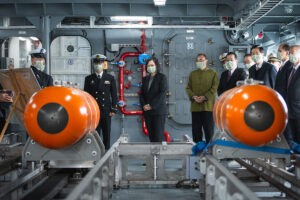
Fast and flexible
Small, fast and manoeuvrable mine warfare vessels are intended to deploy a large number of sea mines in the Taiwan Strait and in the coastal waters off potential landing zones in advance of advancing Chinese forces. Construction of the Min Jiang class began in 2019. The 37-metre-long ships can reach speeds of 14 knots and displace 350 tonnes. They are equipped with an automated system for rapid mine laying and represent a significant increase in performance compared to the seven ROCN minelayers previously deployed. The fourth and, for the time being, last unit was put into service in 2021.
Small combat units play an important role in Taiwan's maritime defence. Fast patrol boats equipped with stealth capabilities are to operate primarily in the archipelago waters in order to carry out surprise attacks against Chinese ships. The small combat units can operate from Taiwan's more than 200 fishing harbours and the smaller islands. This distribution of forces is intended to minimise the risk of preventive Chinese neutralisation.
The twelve new Tuo Jiang-class missile corvettes are particularly important as part of the new procurement programme. With the exception of the heavily armed first unit, each 60 metre long, 685 tonne catamaran carries twelve Siung Feng anti-ship missiles amidships, 12 to 16 Tien Chien 2 anti-aircraft missiles, anti-submarine torpedoes and a 76 millimetre gun on the foredeck. If necessary, rails for laying sea mines could be installed on the aft deck. Alternatively, an unmanned helicopter can be carried; however, the deck is too small for a manned aircraft.
The new ships can reach speeds of 45 knots and are designed to attack the enemy with as little warning time as possible. The hull and superstructure are designed to minimise the radar and heat signature. The ship developed in Taiwan is therefore also categorised as a stealth corvette. The first unit was commissioned in 2021 and the powerful corvettes are designed to be able to attack even the largest enemy warships; Taiwanese media are already referring to them as "aircraft carrier killers". They complement 42 Ching Chiang (launched in 1994) and Kuang Hua VI (launched in 2003) class missile boats, which can reach speeds of 25 and 33 knots respectively and each carry four missiles.
The Anping class of the Coast Guard is derived from the Tuo Jiang class. Categorised as an OPV, the class can also carry anti-ship missiles in the event of war and is to be deployed in coordination with the ROCN corvettes. So far, five of twelve planned units have been commissioned.
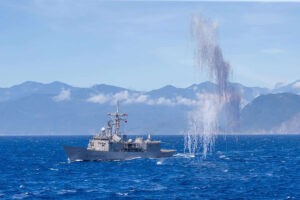
Controversial programmes
However, some of the ROCN's shipbuilding programmes are difficult to integrate into the ODC concept. These include the programme launched in 2018 to develop an amphibious landing ship. In 2018, the company CSBC was awarded the contract to build the type ship of a class consisting of four units. The on-board armament includes a 76-millimetre gun and Tien Chien 2 anti-aircraft missiles.
The 10,600-tonne displacement amphibious type ship Yu Shan was handed over to the navy in September 2022. It will primarily be used to supply the republic's islands located directly off the mainland coast. The ship is equipped with a flood deck and carries both landing craft and helicopters. A closed battalion of marines can also be embarked. It is larger and considerably more powerful than the seven US Navy landing ships, some of which have been in service with the ROCN for decades.
Western observers compare the type with the US Navy's San Antonio class. In the event of war, such a ship could only be deployed after a Chinese invasion of the main island has been repelled in order to recapture smaller islands in the Taiwan Strait. Whether the investment will pay off due to the many expensive weapons systems is rather questionable.
The acquisition of up to eight Indigenous Defence Submarines (IDS) to be built in Taiwan is also controversial in the RC. The Taiwan Strait has a maximum depth of 150 metres and is characterised by much shallower sections. These geographical peculiarities favour submarine hunting and limit the deployment options of offensive submarines. The value of these expensive units in the context of the ODC plan is rather questionable. However, President Tsai Ing-wen emphasised in 2019 at the start of construction that the submarines would represent a significant deterrent factor. They could overcome a hostile blockade of Taiwan and pose a serious threat to enemy warships, especially in the southern Taiwan Strait, Tsai explained.
The boats are being developed jointly by NCSIST and CNBC. The type ship is currently under construction. The boats have a displacement of 2500 tonnes, further technical details remain confidential. Published sketches of the new submarines show elements of the Dutch Zwaardvis class. These also form the basis of the ROCN's two active Hai Lung-class units, albeit with a more modern turret and an X-shaped rudder. The type ship is scheduled for delivery in 2025.

